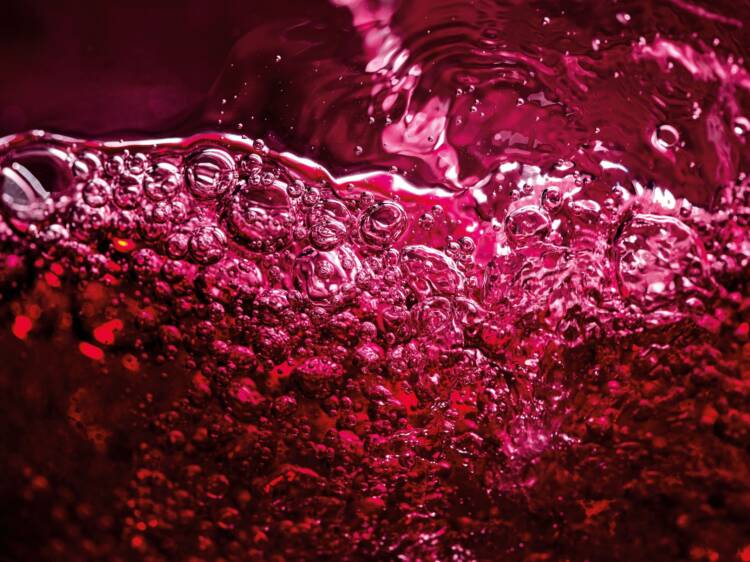By: Rebecca Frapasella, Senior Scientist, Global Applications
Many beverage products currently on the market are high in added sugar and calories. With the nutrition facts panel now requiring manufacturers to list the quantity of added sugars in their products, many beverage manufacturers are looking to reduce added sugar across their product lines. One of the major formulation challenges for reduced sugar beverages is maintaining a clean, sugar-like taste profile. In many cases, the non-nutritive bulk sweeteners and high-potency sweeteners commonly used to achieve sugar reduction goals have different sweetness temporal profiles and taste profiles in application. For this reason, many developers are turning to combinations of sweeteners to provide a sugar-like sweetness profile with a reduction in added sugars and calories.
A Winning Combination for Sweetening Without Sugar
One sweetener combination used in beverage applications for sugar reduction is stevia and allulose. Stevia leaf extracts are natural, high-potency sweeteners that are approximately 250–300 times sweeter than sucrose. However, the use of these extracts is sometimes associated with sweet linger and stevia flavor off-notes, commonly described as herbal, licorice, or bitter. Allulose, a non-nutritive bulk sweetener, provides similar bulk and mouthfeel to sucrose, with a fast onset and dissipation of sweetness. In a recent study, the effect of reducing stevia and adding allulose on the sensory characteristics of a mixed berry-flavored water was assessed.
To evaluate the sensory characteristics of the partial replacement of stevia with allulose, a model mixed berry flavored water formula was used. The reference sample was sweetened exclusively with stevia and had a sweetness potency equivalent to approximately 5% sucrose. The 3.5% allulose sample contained partial replacement of the stevia sweetener with 3.5% allulose, the maximum allowed usage of allulose in non-alcoholic beverage applications. With the addition of allulose, the usage rate of stevia was reduced such that the samples were equal in sweetness. Equal sweetness was validated using a 2-AFC test. A modified qualitative descriptive analysis (QDA) test was then completed to determine the sensory differences between the reference sample and 3.5% allulose sample for total flavor impact, sweet intensity, bitter intensity, herbal intensity, sour intensity, sweet linger, and bitter linger.
Panelists observed differences in both sweet linger and total flavor impact when comparing the stevia-sweetened reference to the 3.5% allulose sample. At the 90% confidence interval, panelists indicated that the stevia-sweetened reference sample had a statistically significantly higher total flavor impact than the sample containing 3.5% allulose. In addition, at the 99% confidence interval, panelists indicated that the stevia-sweetened reference sample had a statistically significantly higher sweet linger that the sample containing 3.5% allulose. While reduction of sweet linger in a beverage may be a positive effect of using allulose to partially replace stevia, the changes in total flavor impact may be concerning. For this reason, modifications were made to the usage rates of the flavor, acid, and stevia to further understand how other ingredients could be adjusted to increase total flavor impact.
By increasing the flavor, acid, and stevia content, the sensory characteristics of the mixed berry-flavored water were nearly brought back to parity with the reference sample. Again, at the 99% confidence interval, the stevia-sweetened reference sample was statistically significantly higher in sweet linger than the adjusted 3.5% allulose sample. In addition, at the 95% confidence interval, the reference sample was statistically significantly lower in herbal intensity than the adjusted 3.5% allulose sample. There are a few possible explanations for this change. One explanation could be that the increase in the usage of the mixed berry flavor brought the herbal notes of the flavor forward, thus causing an increased herbal perception when all other attributes were equivalent. In addition, the slight increase in stevia usage rate may have increased herbal perception. However, this is unlikely because the reference sample contained a higher stevia content than the adjusted 3.5% allulose formula. Thus, the expectation would be for the reference sample to have a higher herbal intensity than the adjusted 3.5% allulose sample if stevia was the driver of herbal perception.
In summary, the partial replacement of stevia with allulose did have an impact on the sensory characteristics of a mixed berry-flavored water formula. A significant benefit to this replacement is that the sweet linger, often seen as a negative sensory characteristic of stevia sweeteners, may be reduced. In addition, the total flavor impact of the beverage may also be reduced. However, by using the other tools in the beverage formula, and tweaking the flavor, acid, and stevia sweetener usage rates, there is potential to bring the sensory characteristics nearly to parity with a stevia sweetened control.

